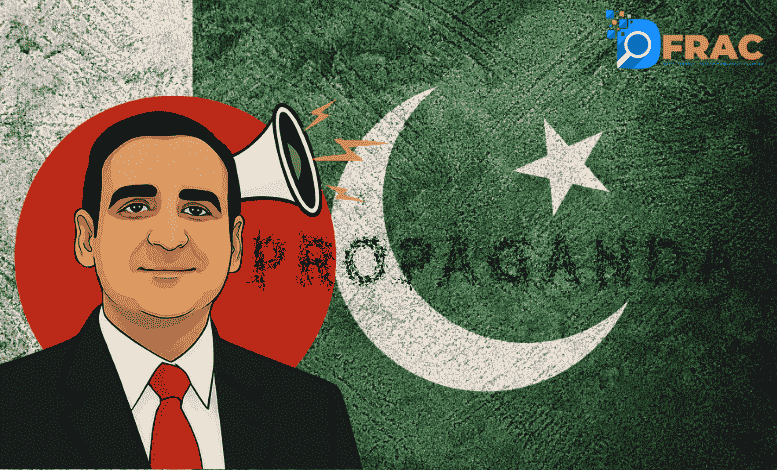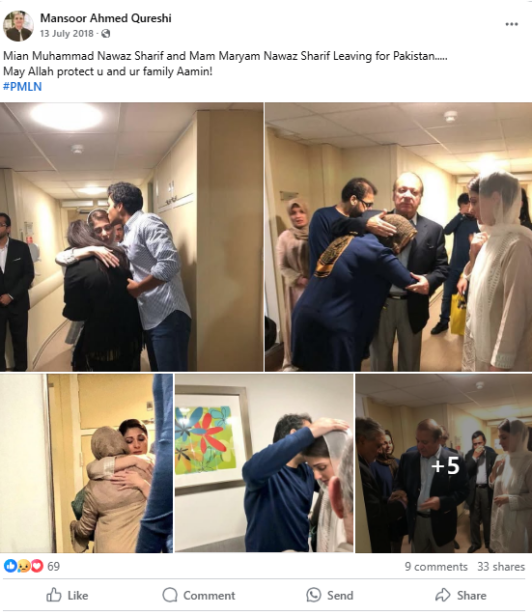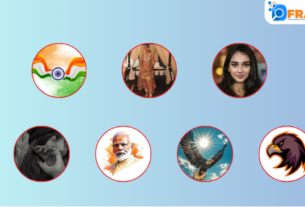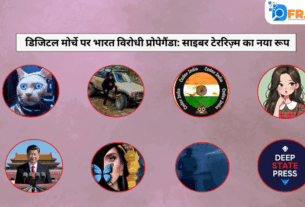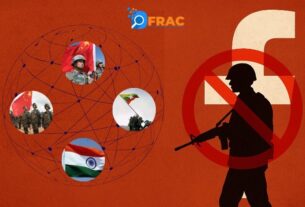Executive Summary
A comprehensive investigation into Pakistan national Mansoor Ahmed Qureshi reveals a sophisticated disinformation operation targeting India through multiple digital platforms, with the primary vector being the Twitter account @MansurQr, active since April 2013. The investigation documents fifteen verified instances of anti-India fake news disseminated during May-June 2024 following the Pahalgam attack, demonstrating systematic exploitation of cross-border tensions for propaganda purposes.
We noted that he has shifted over time from a political commentator to a self-styled reporter, fabricating work papers that link him to the Pakistan Journalist Association and to a string of Urdu outlets. DFRAC also found a now-deleted site he ran from 2013 to 2018, praising former Prime Minister Nawaz Sharif’s projects, marking the first stage of his online spin machine.
During the critical May-June 2024 period, Qureshi deployed a range of disinformation techniques, including fabricated military casualty claims, repurposed unrelated video footage, and systematic misrepresentation of satellite imagery from verified international sources. His Kashmir-focused content demonstrates particular sophistication, combining territorial claims with military superiority narratives that reached engagement levels exceeding 8,000 views per post.
Background: Who is Mansoor Ahmed Qureshi?
Personal Profile
Mansoor Ahmed Qureshi is a Pakistani citizen who has run a Twitter account (@MansurQr) since April 2013. He claims to have studied at the University of Lahore and holds an MBA degree. Qureshi states that he works as a journalist for several Urdu news websites and serves as an Executive member of the Pakistan Journalist Association in Islamabad.
According to the Pakistan Journalist Association website, the organization offers comprehensive services for foreign media personnel, stating: “If a Foreign Journalist or Media person alone or alongside his team wants to visit Pakistan, Pakistan Journalist Association (PJA) will arrange accommodation and complete arrangements of his activities in Pakistan.” This highlights the significant role and access that Executive members like Qureshi potentially have in facilitating international media operations within Pakistan.
His Instagram and Facebook accounts show a different side of his work. He describes himself as specializing in “Photo Restoration | Colorization | Descratch | Enhancement | Vintage Photos | Photography” and says he is from Islamabad. His YouTube channel reveals more about his political activities – while he hasn’t posted videos in over a year, all his previous content from the past year praised Pakistan’s government under Nawaz Sharif.
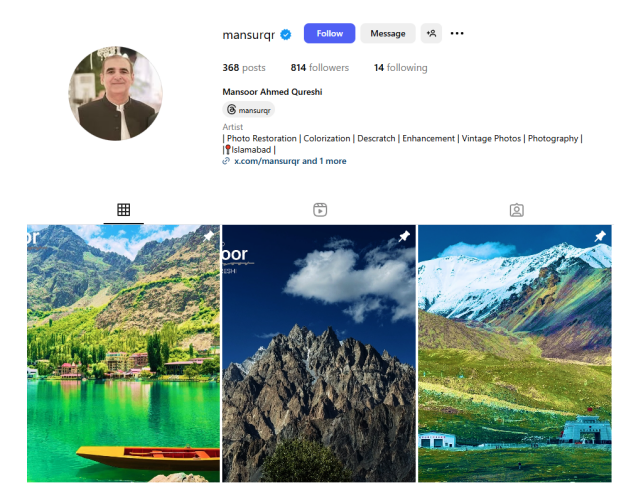
He presents himself as a “multi-dimensional journalist” on professional platforms like Muck Rack. His claimed work experience includes major Urdu websites like Urdu Point and Shafaqna News. However, investigation shows he built these credentials over time to appear more legitimate.
How It All Started: The Nawaz Sharif Fan Years (2013-2018)
Qureshi began as a devoted supporter of Pakistani politician Nawaz Sharif. He openly admitted on his personal website: “Mian Mohammad Nawaz Sharif has always been my leader, and my ideal since childhood.” From 2013 to 2018, he ran a website that showcased all of Sharif’s government projects.
His devotion to Nawaz Sharif was deeply personal. In 2018, when Sharif was leaving Pakistan after being convicted of corruption, Qureshi shared pictures on Facebook of Sharif’s departure and wished him a farewell – showing just how emotionally invested he was in his political hero.
His early work was clearly political cheerleading, not journalism. He took photos of new roads, bridges, and buildings built during Sharif’s time as Prime Minister. He also ran a Facebook page called “Prophecy of Rising Pakistan” to promote these projects. His stated goal was simple: “to compile all of Mian Muhammad Nawaz Sharif’s work, which he did with the government for the welfare of Pakistan.”
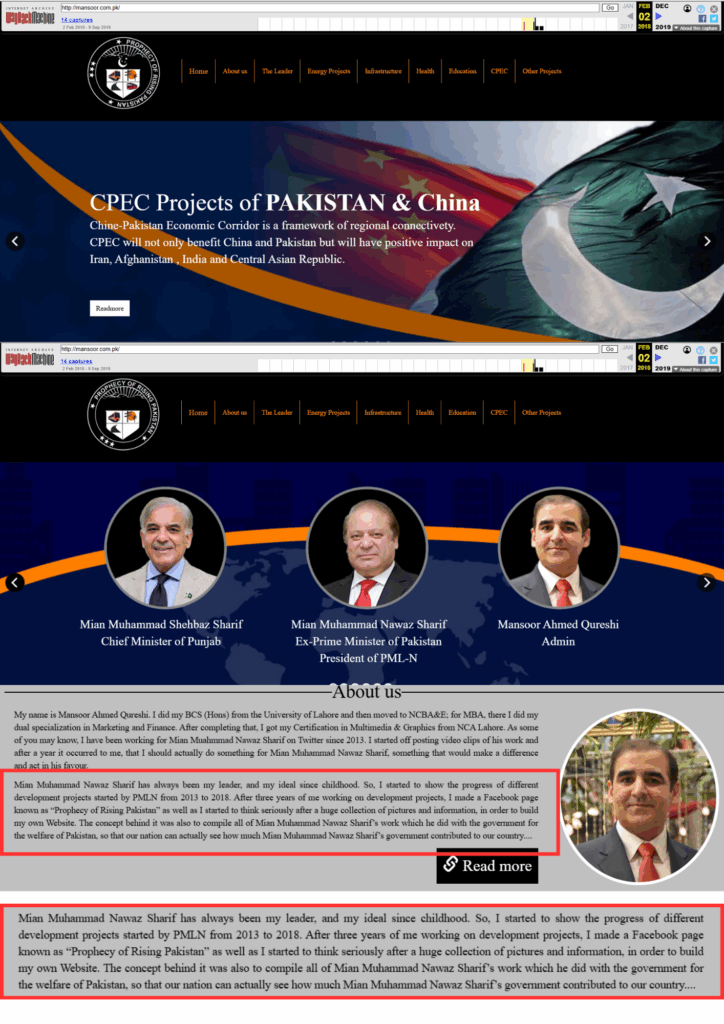
The Gradual Image Change
Qureshi slowly changed how he described himself on social media. His first Twitter bio was honest: “This account is set up to show the progress of different development projects started in Pakistan from 2013 till 2018.” Later, he changed it to sound more professional: now he called himself a “researcher” who posts “about various developments and projects taking place in Pakistan.”
This change happened around the same time he started posting more content criticizing India. He was transforming from a Pakistani government supporter into someone who appeared to be a neutral journalist, but was actually becoming an anti-India propagandist.
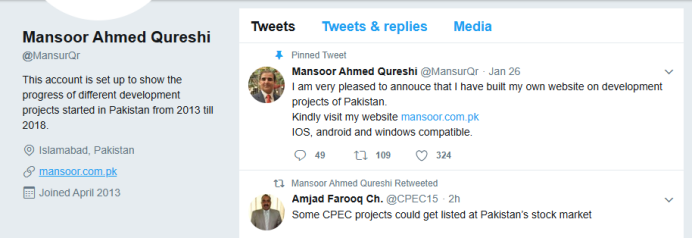
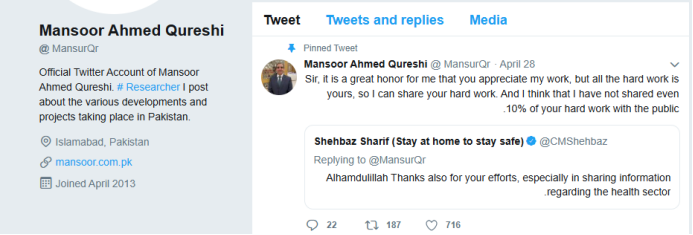
Disinformation Campaign Analysis: May-June 2024
Following escalated tensions between India and Pakistan, a significant increase in fake news was observed from the monitored account during the month of May.
Fact Check 1
Claim: “3 Rafales down, 7 jets lost, Indian media silent. Where’s Shivangi, their hidden pilot? Expose the truth or stay quiet.”
Fact: This is fake news. Pakistani DG-ISPR A.S. Chaudhry explicitly denied holding any Indian pilot in custody during his press conference in mid-May. Indian Air Marshal A.K Bharti has also confirmed that all Indian pilots are safe.
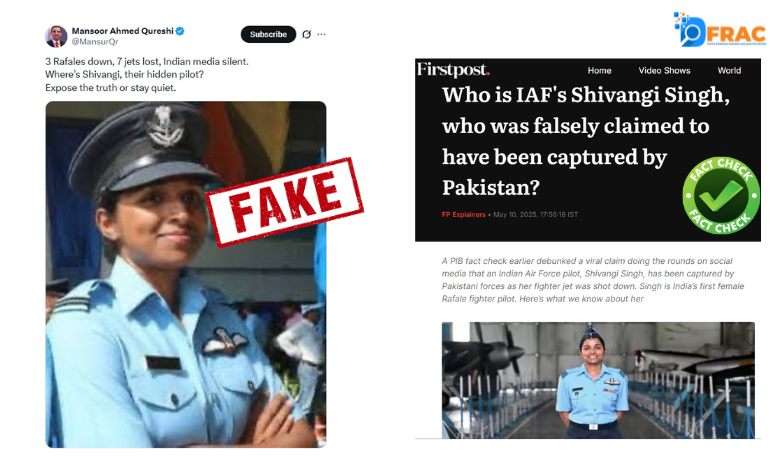
Fact Check 2
Claim: “Direct hit on R&AW safehouse in Jammu, the same compound targeting Muzaffarabad. 3 operatives down. Message delivered, loud and clear.”
Fact: This is fake news. Video evidence of the actual location shows it was an empty residential house near Janipur that sustained only minor damage from the hit.
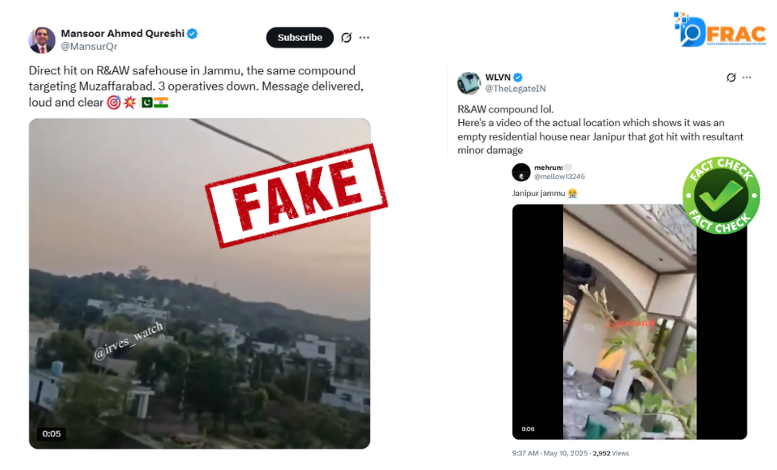
Fact Check 3
Claim: “Bathinda: Ambulance hauls away the remains of India’s ‘pride’, Rafale turned wreckage by PAF’s J-10C.”
Fact: The claim that Pakistan shot down 5-6 Rafale jets lacks independent verification. While the Defence Minister cited “social media” as proof, no neutral evidence or satellite imagery supports this claim. Military experts note that such unsubstantiated claims are common in wartime misinformation campaigns.
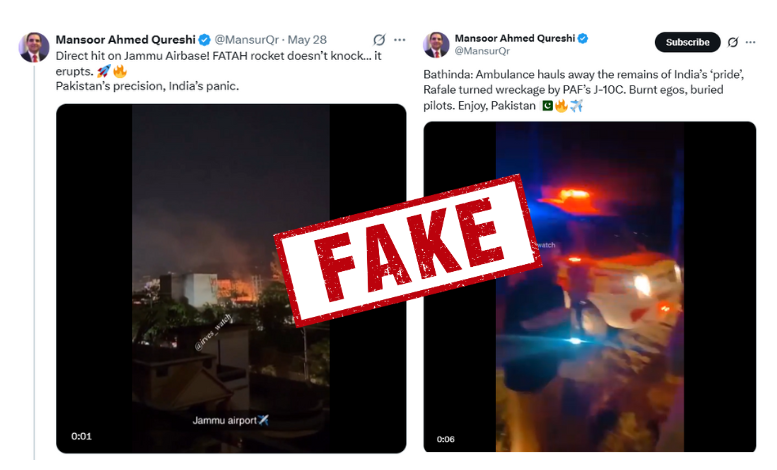
Fact Check 4
Claim: “Adampur Air Base’s S-400 Cheeseboard radar gets a direct kiss from a Pakistani hypersonic anti-radar missile.”
Fact: This claim uses an unrelated video of a farm fire as “evidence.” The video timestamp shows 7:39 PM, while the alleged drone attack began at a later time, proving the footage is not connected to any military incident.
Fact Check 5
Claim: “Adampur’s S-400 radar? More like Indian airbases ‘see-no-defence’ system. Pakistan just proved your so-called ‘invincible’ tech is all smoke and mirrors.”
Fact: This claim also uses the same unrelated farm fire video as “proof.” The video timestamp of 7:39 PM predates the alleged drone attack, confirming the footage is not related to any defence system incident.
Fact Check 6
Claim: “Calling satellite images as photoshopped images. Impressive Photoshop skills! But while you’re busy faking images and spinning stories, we’re busy building realities on the ground.”
Fact: The satellite images in question are not photoshopped. They are verified damage analysis reports published by credible news organisations, including The New York Times, The Washington Post, and Reuters. These reports conclude that India executed maximum precision strikes with devastating effect on Pakistan, while Pakistan failed to deliver a proportionate response.
Fact Check 7
Claim: “White flag raised by Indian army” [with accompanying video]
Fact: This is fake news using recycled footage. The video is from 2020 and shows white flags being raised to allow labourers to visit a post for repairs, which is a common practice on both sides of the border for civilian safety during maintenance work.
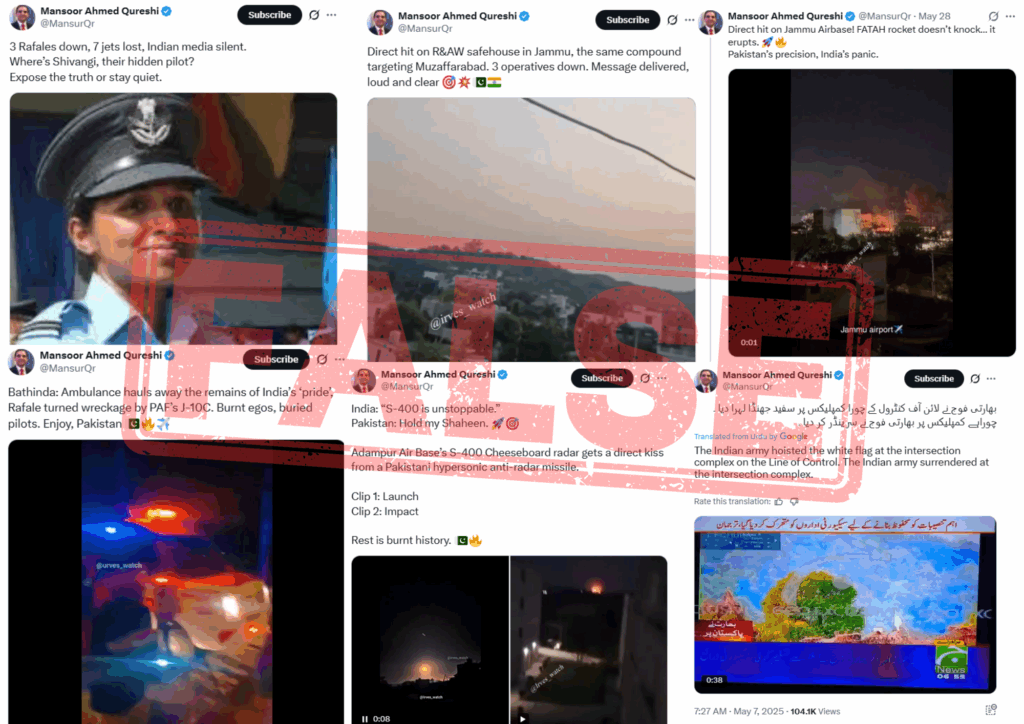
Kashmir-Focused Messaging Analysis
Qureshi’s posts about Kashmir follow a clear pattern: he constantly tells his followers that Pakistan will eventually control all of Kashmir. He writes things like “One day, it will be part of Pakistan, this is my personal belief, not an official statement.” By adding “personal belief,” he tries to avoid getting in trouble while still spreading the message.
This type of messaging serves three purposes: it makes Pakistani followers feel good about their country’s future, it tries to make Indians doubt their control over Kashmir, and it tells the world that Pakistan’s taking of Kashmir is inevitable. It’s psychological warfare disguised as personal opinion.

Diplomatic Positioning Operations
Recent content evolution includes sophisticated diplomatic messaging positioning Pakistan as a reasonable international actor. He posted: “Pakistan takes the Kashmir cause global not with noise, but with narrative. While Delhi tweets tantrums, Islamabad builds consensus. Next stop: Brussels.”
This message is designed to make Pakistan look like a mature, diplomatic country while portraying India as emotional and unreasonable. By mentioning Brussels (where European Union headquarters are located), he suggests that Europe is starting to support Pakistan’s position on Kashmir, though there’s no evidence this is true.
Encouraging “Resistance” Without Directly Calling for Violence
Qureshi carefully promotes what he calls “resistance” in Kashmir without directly telling people to commit violence. He posted: “Field Marshal warns India: Pakistan is ready to crush any misadventure. Kashmir’s resistance lives on.”
This type of message combines official Pakistani military statements with support for anti-India activities in Kashmir. He uses emojis like raised fists and military symbols to make his posts more emotional and engaging. This way, he can support violence against India while claiming he’s just making political commentary.
Timeline of Kashmir-Related Posts

Sentiment Analysis of Kashmir Posts
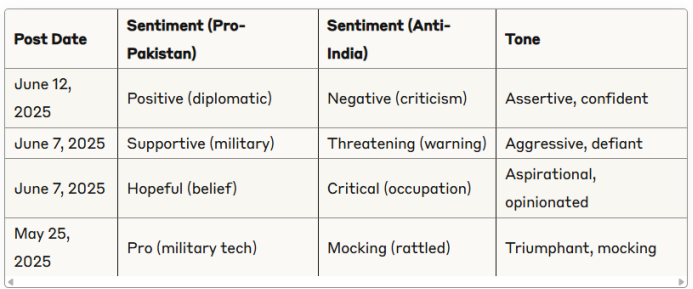
Qureshi’s Kashmir-related posts get over 8,000 views and hundreds of likes, showing that many people engage with his content. His inflammatory posts about Kashmir consistently get more attention than factual news about the region. This suggests that social media algorithms actually reward dramatic, misleading content over truthful reporting.
People from different countries and time zones interact with his posts, meaning his propaganda about Kashmir reaches a global audience. This shows how one person with a social media account can now influence how people worldwide think about complex political issues like Kashmir.
The Bigger Picture
Qureshi is likely not alone. His methods can be replicated by anyone with patience, basic digital skills, and strong political beliefs. As tensions continue between India and Pakistan, more individuals may follow his playbook: build credibility slowly, claim professional authority, then deploy that trust as a weapon during crisis periods.
The investigation into Qureshi’s activities serves as a warning about the new landscape of information warfare. In an era where anyone can become a “journalist” and everyone has a platform, the responsibility for distinguishing truth from propaganda increasingly falls on individual citizens. The stakes of getting this right extend far beyond social media – they touch on the fundamental question of whether democratic societies can maintain informed public discourse in the digital age.
Report compiled through open-source intelligence methodology with cross-verification across multiple digital platforms and archived content repositories.


